Year 3 Teaching Resources
Explore printable worksheets, digital activities, games and more Year 3 resources, all aligned to the Australian curriculum! The teacher-created resources have all been designed with primary teachers and students in mind to meet the special needs of children as they transition into the middle years of their primary school education.
Carefully curated and thoroughly reviewed by the expert teachers of the Teach Starter team to ensure they're classroom-ready, our Year 3 resources can save you lesson planning time this school year with editable and differentiated options at the ready.
Teach Starter’s Year 3 resources utilise a vast array of resource types and have something for every learning area. Here's just a taste of what you'll find for your classroom!
- Spelling words and English worksheets
- Fractions activities and Maths worksheets
- Social and emotional learning activities
- Narrative writing stimuli
- Language conventions practice
- And so much more!
Are you new to teaching Year 3? Here's a look at what this year of primary school is all about!
What Is Year 3 in Australia?
Year 3 sits right in the middle of primary school for most students in Australia as the fourth year of compulsory education.
How Old Are Kids in Year 3?
The exact age of students will vary slightly by state (and birthday!), but most children in your Year 3 class will be 8 to 9 years old.
What Do Students Learn in Year 3?
Year 3 is a big one for Australian students. Many will sit the NAPLAN tests, and more than a few will hit double digits before the year is through. This is a big year for Maths between the introduction of more complex fractions and formal multiplication, as well as even more skill-building in other learning areas.
Exactly what they're expected to learn will depend to some degree on the state or territory where you are teaching, but here's a look at what your students can expect to encounter in the key areas of the curriculum!
English
Year 3 students continue to develop their reading, writing, speaking, and listening skills in their English lessons. Reading will involve more complex texts, including longer novels, non-fiction texts, and poetry.
Students will also be expected to analyse these texts more deeply, examining themes, character development, and literary techniques. Comprehension skill-building will require deeper analysis of texts and drawing inferences from what is read.
While Year 2 instruction focuses on basic writing skills such as sentence structure and punctuation, this older group of students will move toward more advanced writing skills such as paragraphing, using descriptive language, and organising ideas in a logical way.
Grammar and spelling will also become a greater focus this year, with an emphasis on understanding and applying more complex grammar rules and spelling patterns.
Maths
Fractions feature front and centre of the Year 3 Maths curriculum. Students will learn to identify, compare, and order unit fractions (those being fractions with a numerator of 1), as well as use them in simple problem-solving contexts.
We already alluded to this being a big year for multiplication, and is it ever! Year 3 students learn the basic multiplication facts — such as 2 x 2 = 4 and 3 x 3 = 9 — and they begin to use these facts to solve multiplication and division problems. They also learn to interpret and create simple multiplication and division problems.
Students will have the chance to build upon their understanding of measurement concepts from Year 2, including length, mass, and capacity. They'll learn to measure and estimate using standard units, plus how to compare and order measurements.
Maths students will expand their knowledge of 2D shapes this year, and they will begin to learn about three-dimensional shapes and their properties.
Place value is still a big part of maths, of course. Year 3 students expand their understanding of place value to include numbers up to 10,000, and they learn to read, write, and compare four-digit numbers. They also learn to use place value to solve addition and subtraction problems.
Science
Science instruction in Year 3 is more focused on building a deeper understanding of scientific concepts and their applications, as compared to Year 2. It also emphasises the development of scientific inquiry skills that will help kids become more proficient in conducting scientific investigations and communicating their findings.
Students in Year 3 learn to ask questions, plan and conduct investigations, collect and record data, and communicate their findings as part of their development of science inquiry skills. They spend a portion of the year learning about the characteristics of living things, including plants and animals. Year 3 students will have the chance to explore the life cycles of plants and animals, as well as learning about the needs of living things and their habitats.
While they're learning about things that live on Earth, they're also learning about the planet itself, exploring geological features such as rocks, soil, and minerals. They also explore heat energy and how it can be transferred from one object to another.
Last, but certainly not least, Year 3 students learn about the properties and states of matter, including solids and liquids (gasses are explored later on in primary school).
Humanities and Social Sciences
Building on the foundation set in Year 2, Year 3 HAAS lessons build a deeper understanding of historical events and concepts, as well as exploring the social and economic systems that underpin Australian society.
Students learn about the historical events, people, and places that have shaped Australia's history. They explore the concept of change and continuity over time and learn to use historical sources to investigate the past. Students also study significant cultural events celebrated in our country and how they contribute to Australia's diversity and identity.
Geography instruction will guide students as they learn about the physical and cultural characteristics of places and regions. They'll learn more about the representation of Australia as states and territories, and as Countries/Places of First Nations Australians. Students will also begin exploring Australia's neighbours such as New Zealand, Papua New Guinea, and Indonesia.
Civics instruction sees Year 3 students strengthening their understanding of what it means to live in a democratic society. They will draw upon their own personal experiences to examine why rules are important and to discuss how they can be active participants in the communities to which they belong.
Health and Physical Education
With their bodies rapidly changing, Year 3 students learn about the factors that influence their health and wellbeing, including the importance of good nutrition, hygiene, and sleep. They also learn about social and emotional health, including how to manage their feelings, develop positive relationships, and make safe and healthy choices.
In Year 3, there are a number of different types of safety on tap in lessons, including road safety, water safety, and personal safety. They develop an understanding of risk and learn strategies for staying safe in different situations.
Year 3 students also learn about the importance of being active and informed citizens in their community. They learn about the benefits of volunteering and begin to develop an understanding of the responsibilities and rights of individuals in society.
The Arts
In Year 3, students develop more advanced skills in drawing, painting, and other visual arts techniques. This includes studying the elements of art — such as line, shape, colour, and texture — and beginning to use these to create more complex artworks.
In music class, these children are learning all about musical notation and how to read and write simple music, while drama instruction explores different forms of drama, including role-playing, improvisation, and scripted performance. Students get the chance to learn about the elements of drama, such as character, plot, and setting, and begin to use these to create their own dramatic works.
- Free Plan
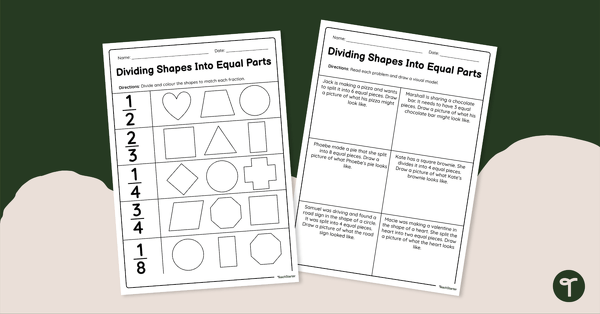
Dividing Shapes Into Equal Parts – Worksheet
Practise dividing shapes and shading fraction models with this maths worksheet for year 2 and 3 students.
- Plus Plan
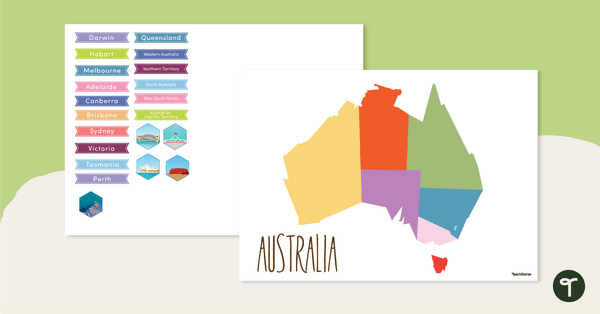
Map of Australia - Labelling Activity
Discover and label Australia's states, capital cities and key landmarks on this blank map.
- Free Plan

Fraction Bars and Number Lines – Cut and Paste Worksheet
Build a fraction bar by piecing together unit fractions and identifying them on a number line with this set of differentiated worksheets.
- Plus Plan
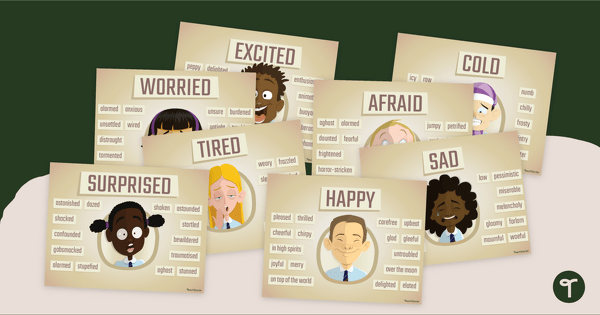
Synonym Poster Pack - Emotions Chart Display
Blend social-emotional learning and vocabulary building activities with a set of 15 emotional synonyms anchor charts.
- Plus Plan
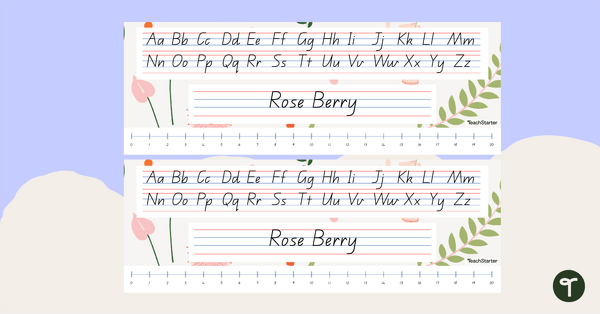
Insect-themed Editable Desk Name Plates
Create individualised desk name plates using this editable Insect-themed desk name plate template..
- Plus Plan
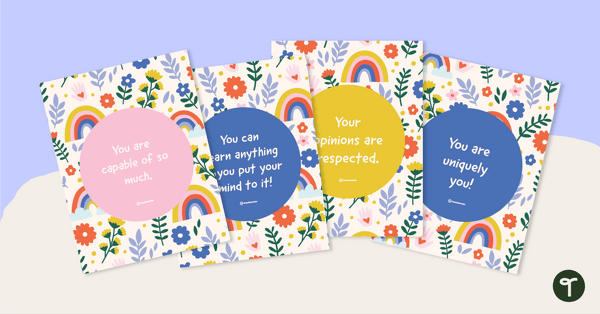
Positive Affirmations for Kids — Classroom Display Cards
Print a set of 25 positive affirmations display cards for kids to use in your classroom.
- Plus Plan
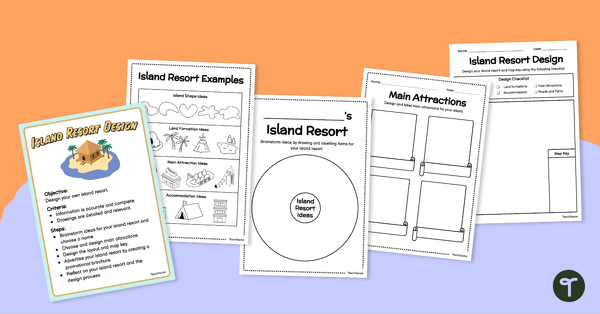
Island Resort Design - STEAM Project
Create and design your own Island Resort with a fun art and STEM project for primary students.
- Plus Plan
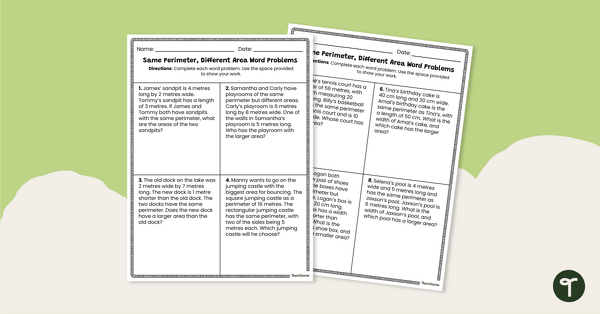
Same Perimeter, Different Area Word Problems – Worksheet
Practise solving multi-step word problems involving objects that have the same perimeter but different areas.
- Plus Plan

Remembrance Day Comprehension Worksheet
Explain Remembrance Day history and traditions to your students with a printable cloze reading passage and comprehension questions.
- Plus Plan
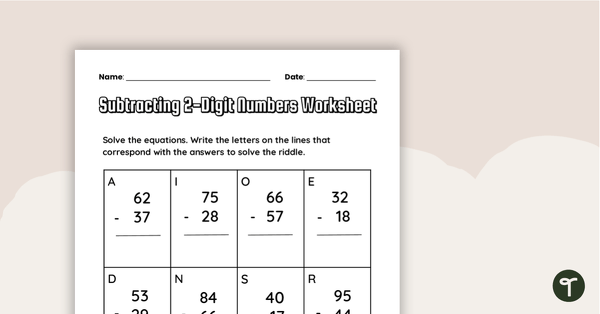
Subtracting 2-Digit Numbers Worksheet
Practice 2-digit subtraction with regrouping with this drill and practice worksheet.
- Plus Plan
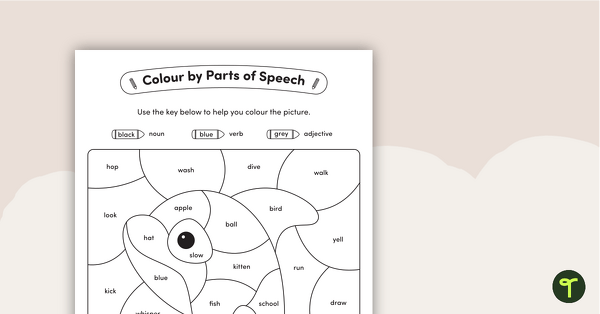
Colour by Parts of Speech - Nouns, Verbs & Adjectives - Whale
Review parts of speech by colouring nouns, verbs and adjectives on the whale.
- Plus Plan
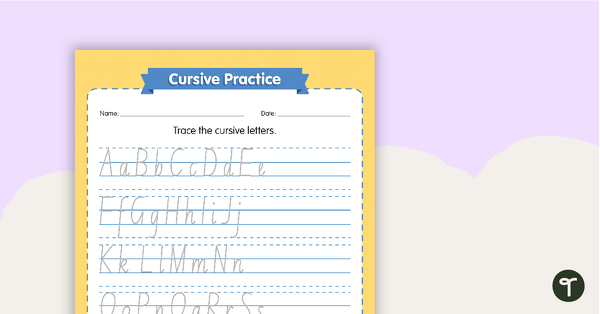
Cursive Writing - Cursive Alphabet Handwriting Practice Sheets
A set of 6 sheets to practise writing letters in cursive.
- Plus Plan
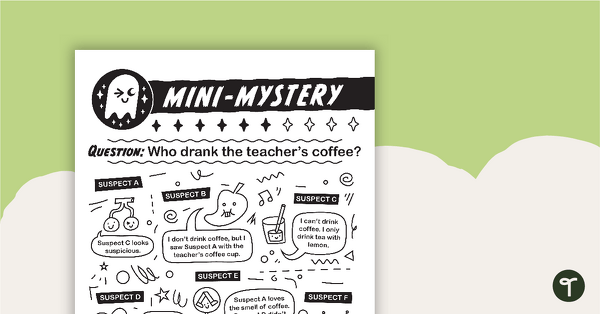
Mini-Mystery – Who Drank the Teacher's Coffee?
A fun, logic-based activity where students read clues to solve the mystery.
- Plus Plan
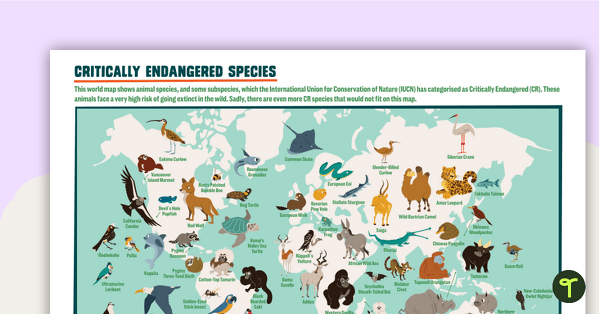
Critically Endangered Species Map
Use this endangered species world map when exploring animals that have been placed on the Critically Endangered list.
- Plus Plan
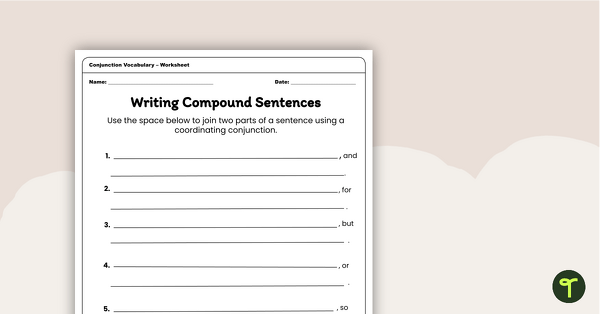
Writing Compound Sentences with Conjunctions Worksheet
Assign this worksheet to allow students to practise using coordinating conjunctions to create compound sentences.
- Plus Plan
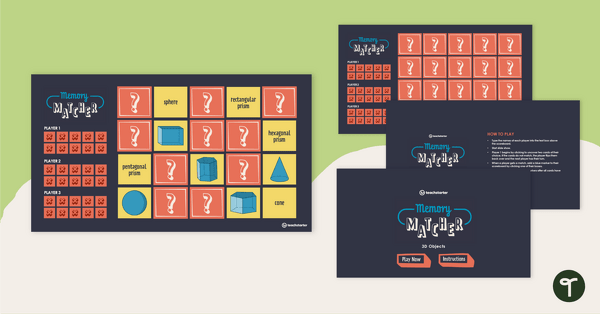
Memory Matcher PowerPoint – 3D Shapes
Recognise and recall the names of some of the most common 3D objects with a digital memory game!
- Plus Plan

Celebrations Crossword Puzzle – Worksheet
A crossword puzzle about holidays and celebrations.
- Plus Plan
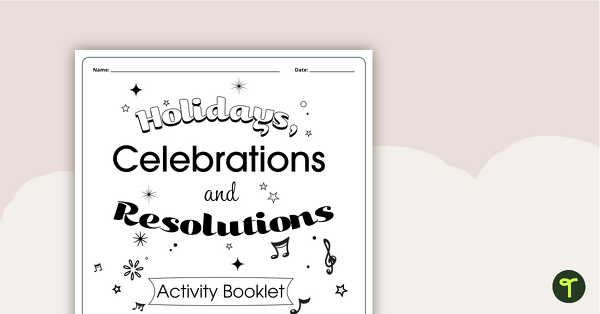
Celebrations and Holidays – Middle Primary Workbook
A 15 page end of year holiday and celebrations activity booklet.
- Plus Plan
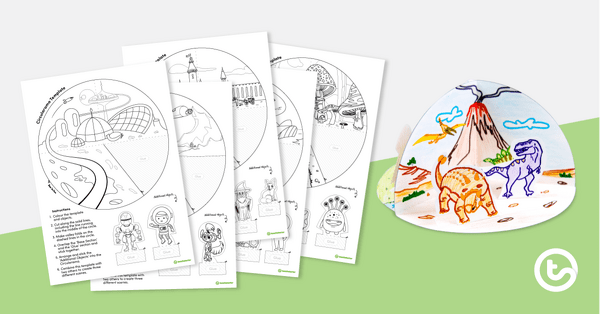
Narrative Setting Circularama Templates
A set of circular diorama templates that combine to create three scenes.
- Plus Plan
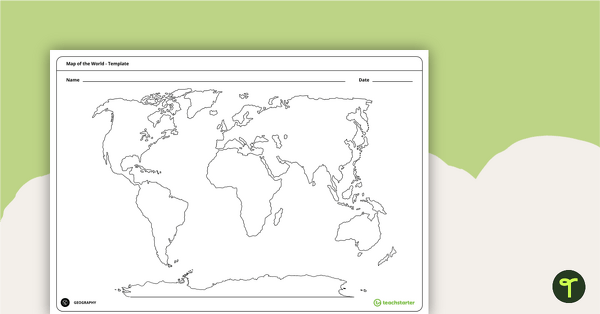
Blank Map of the World - Template
Teach your students about the world’s seven continents and five oceans with this blank map of the world for labelling.
- Plus Plan
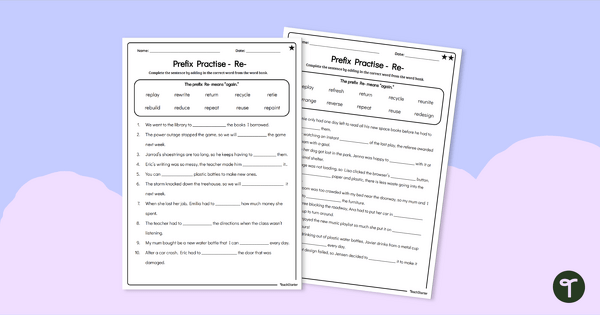
Words with Prefixes Worksheet - Prefix Re-
Build students' understanding of the prefix re-.with a printable prefix worksheet.
- Free Plan
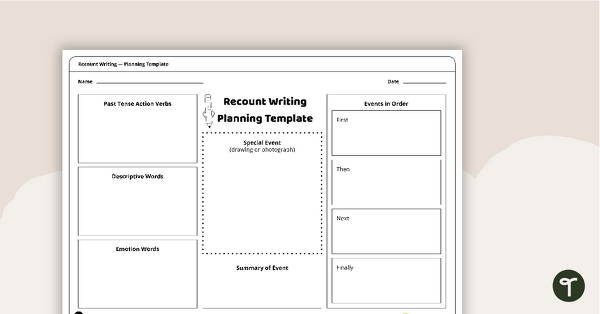
Personal Recount Planning Template
A template for students to use when planning a personal recount.
- Plus Plan
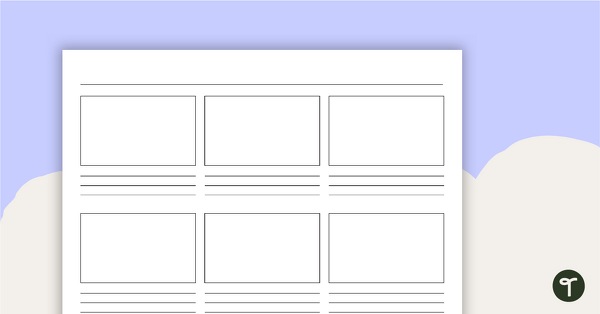
Story Boarding Template
A template for use when constructing story boards.
- Free Plan
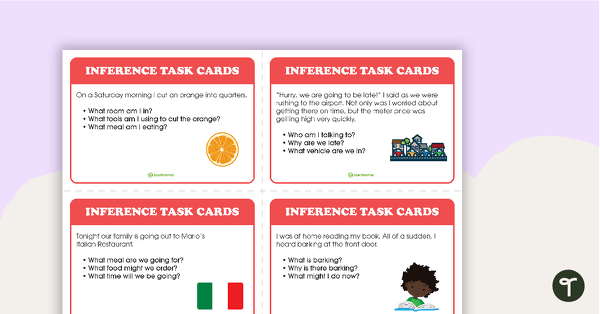
Inferring Written Scenario Task Cards
Task cards that help students use their knowledge and ideas to help them decode ideas in texts
- Plus Plan
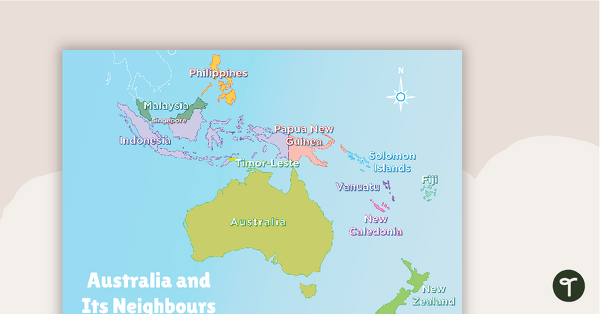
Australia and Its Neighbours - Poster and Labelling Activity
A set of maps and worksheet for students to use when looking at Australia and its neighbours.
- Plus Plan
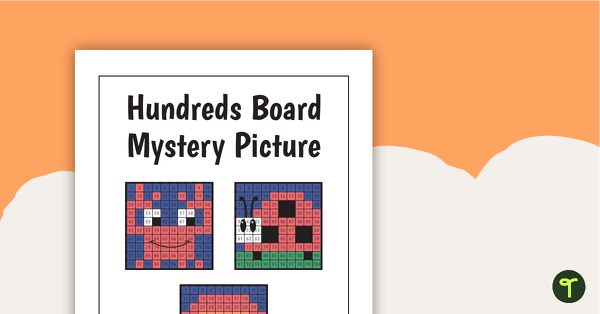
Hundreds Board Mystery Picture Addition Task Cards
A set of 32 activity task cards that require students to complete addition problems and colour in a hundreds chart to reveal a mystery picture.
- Plus Plan
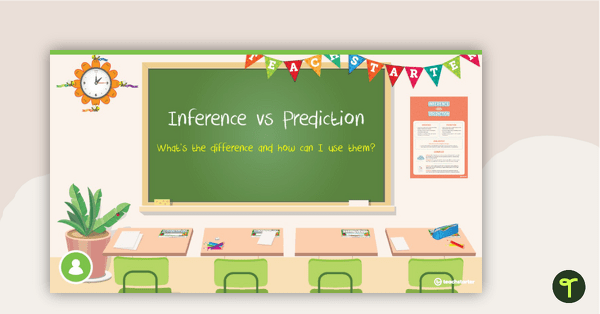
Inference vs Prediction - Presentation
A teaching presentation outlining the similarities and differences between inference and prediction.
- Free Plan
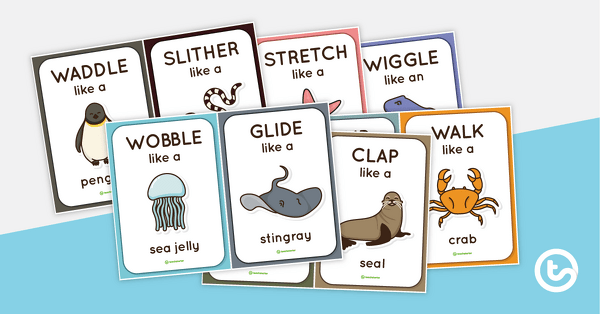
Ocean Themed Movement Cards
A set of 12 Ocean themed movement cards.
- Plus Plan
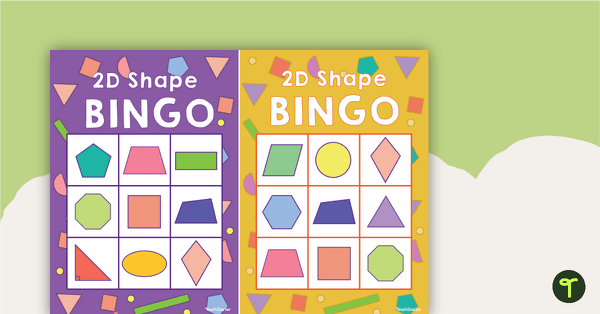
2D Shape Bingo
Engage your students while consolidate learning about 2D shapes, their names and properties with 2D Shape Bingo!
- Plus Plan

Australia Word Search with Solution
A fun word search to help your students learn and work with Australian related vocabulary.
- Plus Plan
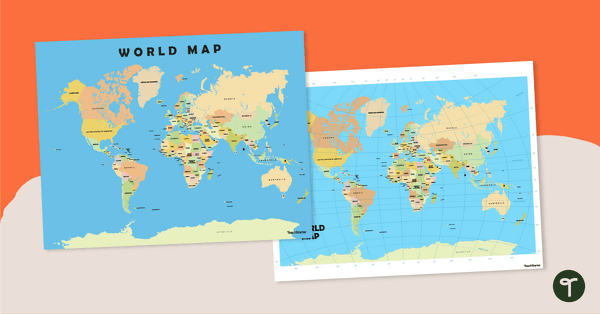
World Map Poster
Teach your students about the continents and countries of the world with this detailed map.
- Plus Plan
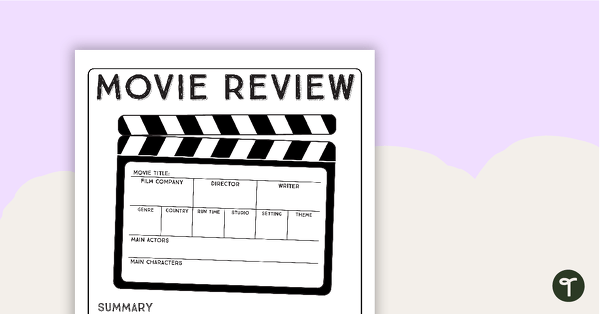
Movie Review Worksheet
A movie review worksheet for students to complete after watching a film.